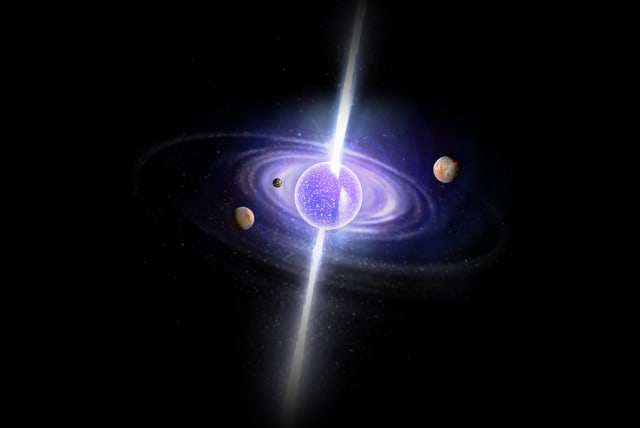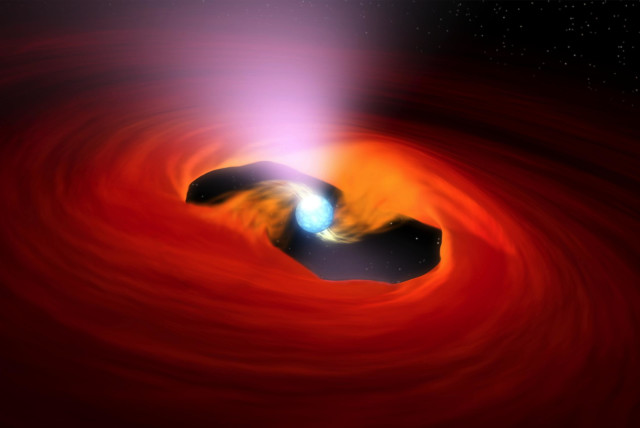Scientists find neutron star in heart of supernova, solving decades-old puzzle - study

The discovery of the neutron star at the center of the supernova finally puts to an end a mystery that has puzzled scientists for over three decades.
Researchers have managed to find definitive proof of a neutron star residing at the center of a large supernova that scientists witnessed in 1987, according to a new study.
The findings of this study were published in the peer-reviewed academic journal Science and were made possible by NASA's James Webb Space Telescope.
The discovery of the neutron star at the center of the supernova finally puts to an end a mystery that has puzzled scientists for over three decades.
A stellar discovery: Finding a neutron star
First, some background.
A supernova is, essentially, an exploding star, and is the ultimate fate for when the stellar core can no longer produce energy. The materials they create and release are essential to the function of the universe, allowing everything to keep expanding and ultimately sending forth the building blocks of the universe's continued expansion.

Stars of all kinds are fueled by this energy production in their cores, which sees energy made by nuclear fission fusing lighter elements to form heavier ones. It is this process that keeps the star hot, allowing gases to expand while simultaneously drawing its mass toward the core in a delicate gravitational balance.
If a star is large enough, then at the end of its life, the massive explosion will trigger, seeing heavy elements being blasted throughout space. The progenitor star itself is either completely destroyed or collapses in on itself to form a neutron star or a black hole.
A neutron star, in particular, is the result of intense gravity and the mass of the core, causing a star to collapse in on itself to form a smaller and super dense stellar object. What makes them so fascinating is that they don't seem to be made of normal atoms. Rather, they seem to be formed entirely of neutrons, one of the building blocks of atoms.
The fact that supernovae caused black holes and neutron stars was only long theorized before more definitive research was found in early 2024 by scientists from the Weizmann Institute of Science in Rehovot, Israel.
But now we have definitive evidence of the neutron star left behind by a supernova witnessed 37 years ago.
Enter, Supernova 1987A.
Witnessed February 24, 1987, this supernova occurred somewhere in the Large Magellanic Cloud, a satellite dwarf galaxy of the Milky Way.
It was incredibly bright, being the brightest supernova seen on Earth in 400 years.
But just one day before, scientists detected small sub-atomic particles called Neutrinos, which researchers realized must have been created by the supernova.
This would only have been possible if there was a neutron star at the center of the supernova. But no one knew what happened to it, if the neutron star stayed in place or if it collapsed further, forming a black hole.
But this longstanding mystery has now been solved thanks to the James Webb Space Telescope.
The telescope itself isn't able to look at the neutron star itself, since all the dust from the supernova has obscured vision. However, the James Webb Space Telescope can do far more than just look directly at something.
Using infrared technology, the telescope can study wavelengths to determine chemical composition. What they found is evidence of certain elements, specifically argon and sulfur, near the epicenter of the supernova. However, the atoms of these elements they found had been ionized, meaning they lost their outer electrons.
Now, how could these atoms have been ionized?
To figure this out, the researchers went through a number of different scenarios. Ultimately, they came up with only two possibilities. Either the neutron star released ultraviolet and X-ray radiation, which would have ionized the atoms, or it was due to the neutron star rapidly rotating, pulling charged particles around it and forming a pulsar wind nebula.
Regardless of which option is correct, or if both are, it would only be possible if a neutron star still resides at the center of Supernova 1987A.
But if it was the first option, it would mean the neutron star has gotten much cooler.
Despite neutron stars having once been stars, they no longer generate heat since the processes of the cores no longer function. Of course, they are still hot, since they need to cool down, which will take place over a very long period of time.
At the time it was formed, the neutron star would have been around 100 billion degrees in temperature. Now, it may be just a million degrees. But that's still enough to let it produce the radiation needed to ionize these atoms.
Judy Siegel-Itzkovich contributed to this report.
